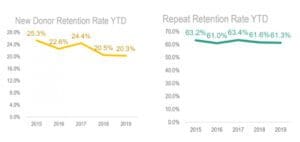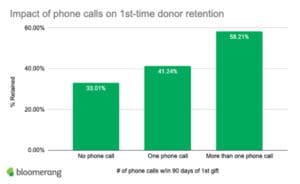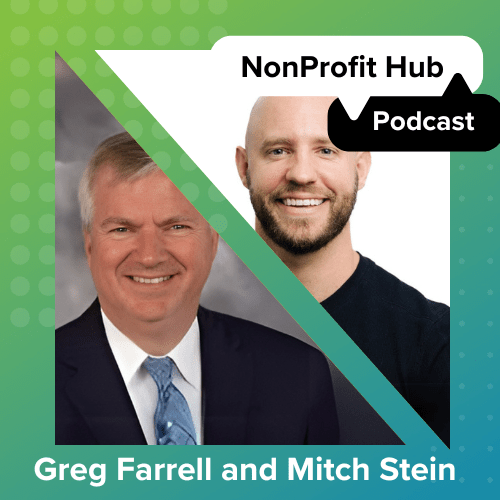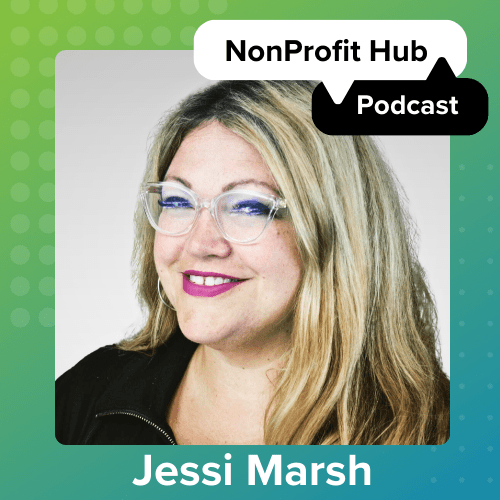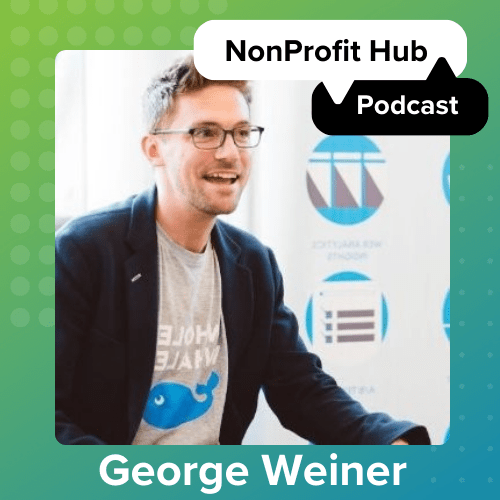Your nonprofit’s team likely spends quite a bit of time focusing on raising the funds you need to achieve your goals. There are many considerations to go over, including what types of campaigns to employ, what fundraising strategies to exercise during these campaigns, and what your revenue goals are.
However, during these discussions, many organizations ask the same question: “How do we attract more donors?” While this is important for spreading awareness, it’s not the most effective way to raise money.
In fact, there’s often a negative return on investment when it comes to attracting new prospects. Research shows that it’s much more difficult and expensive to attract new supporters than it is to retain the ones you already have.
Start boosting your donor retention rate by focusing on those who are just giving to your nonprofit for the first time. We’ll start this guide by explaining why these new donors are so important to this strategic approach.
Why First-Time Donor Retention is Important
New donor retention plays a major role in your overall retention rate. This has a lot to do with the power behind a second donation. The second donation a supporter makes to a nonprofit is often called the “golden donation” because it signifies that that individual will likely give for many more years to come.
According to data from the Fundraising Effectiveness Project found in Bloomerang’s donor retention guide, the donor retention rate for those who contribute the “golden donation,” also known as the repeat donor retention rate, averages at about 60%. Meanwhile, new donors who have only given once only have a little over 20% likelihood of contributing again. You can see this represented in the image below:
The drastically lower new donor retention rate means that focusing your efforts here offers the greatest potential for fundraising success.
We recommend the following strategies to boost your first-time donor retention rate to see the greatest impact on retention:
- Call your new donors.
- Send welcome kits.
- Show the impact of donors’ contributions.
As we walk through these top suggestions, consider how you can incorporate them into your nonprofit’s strategy to boost your new supporter relationships.
1. Calling Your Donors
One of the best ways to instantly engage your supporters is to call them on the phone or use video conferencing tools in order to establish a personal connection through one-on-one conversations.
This Bloomerang study found that donors who received more than one phone call within 90 days of their first donation were retained 58% of the time compared to the 33% donor retention rate for those who did not receive a phone call.
Therefore, we know that phone calls have a positive impact on your first-time donor retention rate. So how do you make the most of these phone calls?
First, make sure to collect supporters’ correct phone numbers and save them to your donor database. Prior to each call, log in to review individuals’ data such as donation dates, amounts, and campaigns they contributed to.
Armed with this information, you can structure your call:
- Ask them how they’re doing. You always want to make sure that you’re putting the wellbeing of your supporter first.
- Thank them for their contribution. Specifically mention the amount, the campaign it was given to, its specific impact and how that impact will advance your overall mission.
- Get to know them. You might not yet know why a first-time donor has chosen to support you, how they heard about you, and/or why they’re passionate about your cause.
- Remind them of your mission. Casually talk about the broad needs in the community and how your philanthropic initiatives are working to fulfill those needs.
- Finally, mention the plans for the future. Do you have another upcoming campaign or event? Tell your supporters about other involvement opportunities and invite them to stay engaged with your mission.
No matter how you approach it, make sure to call within the first 90 days (preferably within the first 30 days) of the initial donation.
2. Welcome Kits
While calling supporters can help establish a personalized connection, sending a welcome kit can bolster the relationship with the organization.
Your welcome kits, whether sent by email or through the mail should, of course, say “thank you.” But, primarily, they should speak to the burgeoning relationship by telling the donor that you recognize they are new to the “family” of donors. Donors like it when you tell them what kind of donor that they are because it shows that you’re paying attention. Saying things like “Thank you for your first gift” or “Welcome to our community of supporters” in an exclusive piece that only new donors get will make recipients feel like they’re now part of something special.
Including a unique thank-you letter for first-time donors, brochures, past issues of print newsletters, and even small premiums like stickers or seed packets will make the kit seem substantial but not overwhelming or wasteful.
You can include material that leads supporters to additional ways to get involved, so that they can continue contributing either financially, with their time, or by attending events.
But how do you lead them to stay involved? Provide educational resources so they better understand what your organization does and why it’s important for the community.
Use welcome emails as an opportunity to arm your supporters with the education they need to feel connected to your cause. Try crafting emails for your new supporters that mention:
- Your organization’s mission
- Needs in your community
- Your next big project or initiative
By providing additional information, you can deepen supporters’ understanding and their connection.
If you’re having difficulty getting started with welcome kits, we recommend using and customizing a template to ensure you don’t forget any integral information. You can find great resources for templates online!
3. Showing Impact
Research shows that supporters love to know the impact that they’ve created through their giving. After all, people give in order to impact their communities and the causes they care about. There are several methods for showing supporters’ impact on your mission, including:
- Include it in your thank-you message. Frame your thank-you message to show supporters that their contributions are integral in helping you achieve your goals.
- Incorporate impact stories in future communications. Subsequent newsletters and appeals sent to first-time donors should include stories of impact, giving those donors the chance to continue to make a difference.
- Use social media. Social media is a great place to show supporters (and prospective supporters) the impact that gifts have. Photos and videos of service recipients, whether they’re humans, animals, or the environment – will give followers a tangible sense of what gifts go towards.
When you craft your impact statements, be sure to put it in terms that highlight the supporters’ actions. To practice this, try completely removing the first-person narrative language. This means avoiding “we,” “our,” “I,” and “my” and replacing them with “you” and “your.”
For example, consider the following statements:
Our organization now has the resources to feed 25 additional families this Thanksgiving thanks to your generous gift of $100.
Versus:
Your generous donation of $100 has helped provide a full Thanksgiving dinner for an additional 25 people this year. On behalf of them, thank you for your support.
The second statement shows the supporter the impact of their gift and how important they are to your mission (which is what they feel driven to support). It’s framed in a way that highlights the supporter’s actions and shows appreciation for their involvement.
In addition to framing your impact statements properly, be sure to tell stories throughout the year that also demonstrate the large-scale impact of gifts. This guide explains how including constituents’ personal stories in your marketing outreach can drive continued donations.
Remember, the greatest opportunity your organization has to boost fundraising through your donor retention rate is by increasing your first-time donor retention rate. This means you need to make a strong first impression on your donors right away.
These three best practices enable you to establish personal donor connections, provide necessary educational resources, and show the impact they have on your mission—which can directly boost this retention rate.



